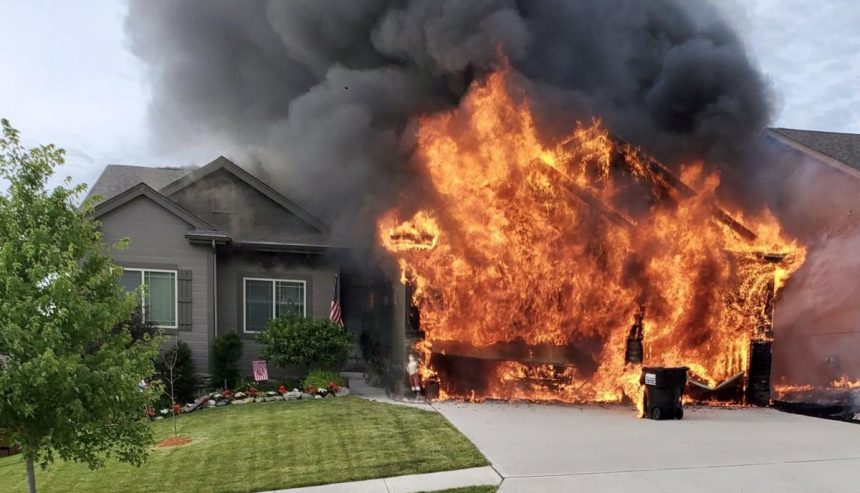All about Dry Star Restoration
All about Dry Star Restoration
Blog Article
The Greatest Guide To Dry Star Restoration
Table of ContentsIndicators on Dry Star Restoration You Need To KnowAbout Dry Star RestorationThe Single Strategy To Use For Dry Star RestorationDry Star Restoration Can Be Fun For AnyoneHow Dry Star Restoration can Save You Time, Stress, and Money.
Within mins, the kitchen was ablaze, creating considerable damage and needing months of remediation work. Especially in winter season, home heaters are a typical fire danger. Malfunctioning electrical wiring or putting heating units as well near flammable materials like curtains can stir up a fire. Always maintain heating systems far from anything that can shed and examine them routinely.
Statistics: According to the National Fire Security Organization, household chemicals are accountable for a noteworthy portion of home fires each year. By recognizing these common causes, you can take actions to make your home much safer.
10 Easy Facts About Dry Star Restoration Explained

Trick concerns include: Water Breach: Water can permeate into walls, floorings, and furniture. This can weaken the architectural stability of your home. Mold Growth: If water is not dried out promptly, mold and mildew can start to grow within 24-48 hours. Mold and mildew can create health and wellness issues and additional damage to your residential or commercial property. Architectural Weakening: Water can deteriorate wooden frameworks and cause steel parts to corrosion, making your home dangerous.
Next, we will dive into the actions entailed in the fire damages restoration process. Fire reconstruction is the process of cleaning, fixing, and recovering a property that has actually been harmed by fire.
Unknown Facts About Dry Star Restoration
Debris Elimination and Demolition: Harmed materials are safely removed, and any type of harmful substances like asbestos are handled suitably. Fire damage includes several types of harm to a property: Physical Damages: This consists of charring, smudging, and fragmentation of materials directly influenced by the fire.
Water Damage: Water made use of to snuff out the fire can lead to structural weakening and mold and mildew growth otherwise correctly taken care of. Fire restoration professionals make use of specialized strategies and tools to resolve all these kinds of damage, guaranteeing the residential or commercial property is risk-free and comfortable once more. Next, we will study the steps associated with the fire damages remediation procedure.
From cutting edge water extraction devices to specialized devices for smoke and soot removal, we have the sources required to recover your residential or commercial property to its pre-loss condition. Our strategies are developed to be thorough and effective, reducing additional damage and accelerating the recovery process. Our group includes accredited service technicians that are experts in fire damage remediation.
Some Known Facts About Dry Star Restoration.
Their competence makes sure that every job is done right, providing you with tranquility of mind during a hard time. If you require fire damage repair more helpful hints services, do not think twice to call us. We're here to help you recover your home and your life after the fire. Last modified on 15th of July 2024.
(https://lnk.pblc.app/pub/adaa4e1dda3a77)If there's a fire, smoke is certain to comply with. While the fire's smoke is composed of aspects that make your home harmful to be in, the damage smoke leaves behind doesn't quit there. Smoke will certainly drift to relatively every component of your home, sticking to furnishings, decoration, curtains, walls, ceilings, floorings, and more.
The water will soak right into the charred materials and infected other locations of the home unaffected by the fire. If left unattended or missed during fire damages remediation, the water damages will only worsen with time and can cause mold and mildew development, security concerns for your home's framework, and undesirable appearances around your space, including warped flooring, peeling paint, and visible discolorations.
The Ultimate Guide To Dry Star Restoration
Water reduction is frequently the first step of the fire, smoke, and water damages remediation process after a damage control has actually been completed. This resolves the water damages head-on and consists of actions to avoid additional troubles for your space prior to, during, and after remediation. Examination and damages assessment to assess the degree of water damageIsolation of water damages to impacted locations to restrict water from spreading out to completely dry areasInspection of your home's structure for architectural stabilityExtraction of any standing water from the propertyStructural drying out with commercial-grade equipmentSite cleaning that will remove particles, pack out salvageable material for restoration, and give way for repair servicesWe'll also complete added damages mitigation by boarding up broken doors and windows, using tarps to holes in roofings, and finishing various other actions to avoid added damages and risks to your home while the repair work are taking area.
Most terms and descriptions used by water and fire damages reconstruction professionals are fairly self-explanatory. The listing of terms listed below should be of aid when you're interacting with the business you have actually employed. Any action required to protect against the development and spreading of fungi, mold and mildew, mildew, and spores. This can include utilizing solvents or chemicals as ingredients or obstacles on building materials to stop fungus development.
Report this page